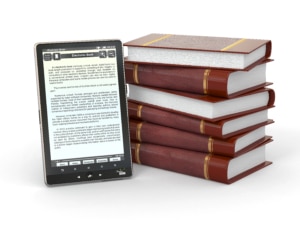The key to improving reading comprehension is using strategies that support working memory when reading. We want information to stay in working memory, and to be processed there, for as long as possible. This is 
Highlight Important Information
Highlighting important information tells the brain that it’s unique and significant, so it ‘stands out’ in our working memory. Use highlight tape to have students highlight information when they don’t own the book.
Record Summarizations
Have kids record, with or without a partner, summaries of their reading. When they get to the end of a page, have them stop and summarize what they just read. Now they’ve read the material and have had to think about it again right away. This repetition keeps what they just read in working memory longer and increases the likelihood they will remember it.
Ask Questions
Another effective strategy is to ask questions at the end of a reading. Have a template with questions like: Has anything like this ever happened to me? Did I ever feel this way? Does this happen in my neighborhood? At the end of each reading, have students answer a question in their journal or notebook, or answer a question to a partner. This strategy can also be used for homework by sending a list of questions home with a reading assignment.
Use Storyboards
To make a storyboard, have students fold a piece of paper into squares and draw about what they read. They might do this while they read a story for the first time, as a review with a partner, or for homework after a reading assignment. The process of turning verbal information into a visual format reinforces the learning and helps keep the information in working memory longer.
Teach Each Other
Research shows that teaching each other, or peer teaching, is one of the most powerful ways to learn. After teaching for seven to ten minutes, give students one to three minutes to share with each other. Talking it out with a partner lets students correct misconceptions and reinforces the material by keeping it in working memory long enough to make an impact.

Bring Susan to your campus!
Featured seminar – Differentiation Strategies to Reach ALL Learners in the Inclusive Classroom

